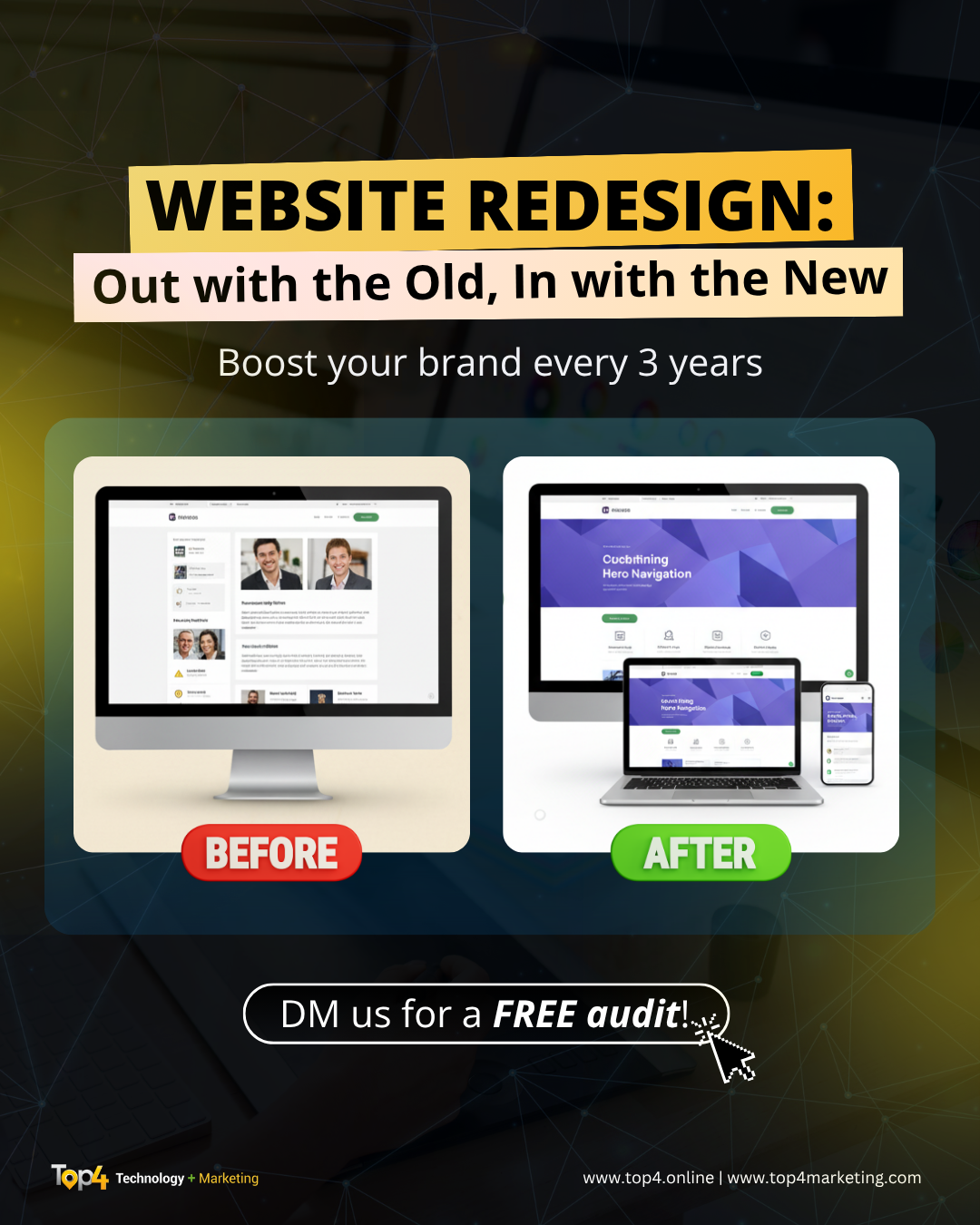Did you know that industry experts recommend redesigning your website every 2-3 years? While this might seem like a short timeline, there are compelling reasons why this frequency has become the industry standard.
The 3-Year Rule: Why It Matters
According to multiple web design agencies and digital strategists, most websites should undergo a complete redesign every two to three years. This isn’t just an arbitrary number—it’s based on the rapid pace of technological evolution and changing user expectations.
For B2B SaaS companies specifically, the standard redesign frequency falls within this 2-3 year window. As one industry source notes, “What looks modern in 2024 might appear primeval by 2026.” This rapid shift in design standards means that even recently launched websites can quickly start to feel outdated.
The Rapid Evolution of Web Technologies
The web design landscape shifts dramatically every few years, making regular updates essential. Here’s what changes in just a 2-3 year period:
Design Trends and User Expectations Web design trends are moving toward more intentional and refined motion design in 2025, embracing a “less is more” philosophy after years of excessive animation. The industry is also experiencing a shift toward self-expression and individuality, moving away from years of minimalist designs. What captivated users three years ago now feels dated and uninspired.
Technology and Functionality Advances
- 70% of consumers say website loading speed affects their purchasing decisions, and performance standards continue to rise
- New capabilities like micro-interactions and sustainable design offer opportunities to craft more engaging, inclusive, and forward-thinking websites
- VR and AR technologies are enabling more interactive 3D design elements
- No-code and low-code technologies are expected to triple by 2025, changing how websites are built and maintained
Security and Compatibility Requirements Regularly updating ensures compatibility with online services and enhanced security with modern web technologies. As businesses update their websites using new web technologies, older browsers won’t function properly and won’t display parts of websites correctly. A website built three years ago may not only look outdated but could also have security vulnerabilities or compatibility issues with current browsers.
The Cost of an Outdated Website
The stakes for maintaining a modern, user-friendly website are higher than ever. Recent statistics reveal just how critical good web design has become:
- 38% of users will stop engaging with a website if the content or layout is unattractive
- 88% of users are unlikely to return to a website after a poor user experience
- Over 40% of users exit sites with inferior functionality or outdated layouts
- 94% of first impressions about your business are related to your website design
These numbers paint a clear picture: your website isn’t just a digital brochure—it’s often the first, and sometimes only, chance to make an impression on potential customers.
Signs Your Website Needs a Redesign
While the 2-3 year guideline is useful, certain warning signs might indicate you need a refresh sooner:
Technology and Performance
- Slow loading times (users expect pages to load in under 3 seconds)
- Poor mobile responsiveness (63% of website traffic now comes from mobile devices)
- Outdated security protocols
- Compatibility issues with modern browsers
User Experience
- High bounce rates or declining engagement metrics
- Difficult navigation or confusing user flows
- Forms and features that don’t function properly
- Design that looks dated compared to competitors
Business Alignment
- Your brand identity has evolved, but your website hasn’t
- Your target audience has shifted
- You’ve expanded products or services that aren’t well-represented
- Your website doesn’t reflect your current market position
The ROI of Regular Updates
Investing in website redesigns isn’t just about aesthetics—it delivers measurable business results:
- Companies that improve their UX see up to 83% increase in conversion rates
- Better UX design can boost website conversion rates by up to 200%
- Every dollar invested in UX returns $100 (a 9,900% ROI)
A Continuous Improvement Approach
Rather than viewing your website as a “set it and forget it” asset, consider adopting a continuous improvement mindset. Make smaller updates and enhancements regularly, with a full redesign every 2-4 years. This approach ensures your website always features fresh content and maintains a modern appearance that attracts and retains visitors.
The Bottom Line
In today’s fast-paced digital landscape, a website redesign every 2-3 years isn’t a luxury—it’s a necessity. Whether you’re running a small business website, managing an association’s online presence, or overseeing a B2B SaaS platform, keeping your digital storefront current is crucial for staying competitive.
Your website is more than just a URL—it’s your 24/7 sales representative, your brand ambassador, and often the first touchpoint for potential customers. Can you afford to let it become outdated?
Ready to evaluate your website? Start by asking yourself: Does my website still represent my brand effectively? Is it providing the user experience my audience expects? If you hesitated on either question, it might be time to consider a refresh.

 SAUDI ARABIA
SAUDI ARABIA

























